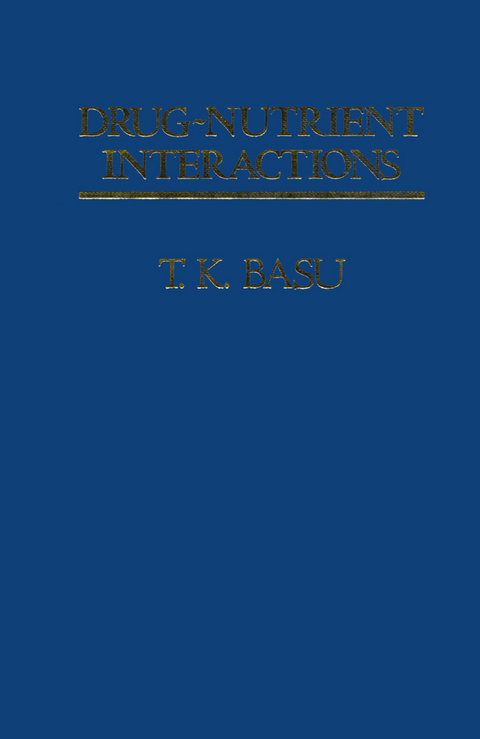
Drug∼Nutrient Interactions
Springer (Verlag)
978-94-011-7083-3 (ISBN)
1. Introduction.- 1.1 Nature and Origin of Anutrients in the Diet.- 1.2 Potential Carcinogens in Foods.- 1.3 Pharmacological Agents (Drugs).- 1.4 Clinical Implications of Induced Rate of Metabolism of Foreign Compounds.- 2. The Fate of Anutrients in the Body.- 2.1 Metabolism of Foreign Compounds.- 2.2 Nutritional Factors Affecting the Metabolism ofAnutrients.- 2.3 Non-nutritional Dietary Factors Affecting the Metabolism of Anutrients.- 3. Nutritional Consequences of Drug Therapy.- 3.1 Drugs Affecting Food Intake.- 3.2 Drugs Affecting Absorption.- 3.3 Drugs Affecting Carbohydrate Metabolism.- 3.4 Drugs Affecting Lipid Metabolism.- 3.5 Drugs Affecting Protein and Amino Acid Metabolism.- 3.6 Drugs and Vitamin Interactions.- 3.7 Drug and Mineral Interactions.- 3.8 Conclusions.- 4. Alcohol and Nutrition.- 4.1 Alcohol Metabolism.- 4.2 Metabolic Effectsof Alcohol in the Liver.- 4.3 Alcohol and Malnutrition.- 4.4 Alcohol-related Conditions.- 5. Possible Adverse Effects of the Pharmacological Use of Vitamins.- 5.1 Fat-soluble Vitamins.- 5.2 Water-soluble Vitamins.- 5.3 Conclusions.- 6. Drug-Food Interactions.- 6.1 Food Reduces/Delays Drug Absorption.- 6.2 Food Increases Drug Absorption.- 6.3 Food Affecting Urinary Excretion of Drugs.- 6.4 Adverse Reactions Caused by Food.- 7. Nutrition and Experimental Carcinogenesis.- 7.1 Vitamin A (Retinol).- 7.2 ?-Carotene.- 7.3 Vitamin E(?-Tocopherol).- 7.4 Selenium.- 7.5 Vitamin C (Ascorbic Acid).- 7.6 Conclusions.- 8. General Conclusions.- References.
| Zusatzinfo | XIV, 160 p. |
|---|---|
| Verlagsort | Dordrecht |
| Sprache | englisch |
| Maße | 140 x 216 mm |
| Themenwelt | Schulbuch / Wörterbuch |
| Geisteswissenschaften | |
| Medizin / Pharmazie ► Medizinische Fachgebiete ► Pharmakologie / Pharmakotherapie | |
| Naturwissenschaften | |
| Sozialwissenschaften | |
| ISBN-10 | 94-011-7083-5 / 9401170835 |
| ISBN-13 | 978-94-011-7083-3 / 9789401170833 |
| Zustand | Neuware |
| Haben Sie eine Frage zum Produkt? |
aus dem Bereich


